Benedict Noel of The Mushroom Guide shares his tried and tested alternatives to single use plastic in mushroom growing.
One aspect of mushroom cultivation that needs improvement is the use of single-use plastics and there are alternative options for small scale growers.
In my guide to growing shiitake mushrooms, I use mushroom bags with filter patches. These are the main way that people grow gourmet mushrooms, and in general they are used once and then discarded. While it’s potentially possible to recycle these bags, it can be a real headache cleaning them and removing the filter patches. It would be good to find alternatives to single-use plastic and we’re beginning to see some movement in this direction. For instance, one of the largest suppliers of mushroom bags in the US is currently trialling biodegradable filter patch bags.
Don’t get me wrong, plastic is an amazing material – it is cheap to produce, flexible, compacts well and can withstand high temperatures and pressure. However these properties also make them a real problem for the environment. Plastic takes an extremely long time to degrade and is turning up in all kinds of places it shouldn’t be.
In my opinion, basically everything in mushroom growing is a good for the environment except for the prevalent use of single-use plastic. Mushrooms can be grown on waste products and once you’ve fruited the mushrooms on this waste material, it can be composted, vermicomposted (with worms) or used to supplement livestock feed. If composted, it can then be applied directly to the garden.
Growing shiitake in re-usable containers
It’s fairly common to see people growing oyster mushrooms in re-usable buckets as the substrate for the oyster mushrooms can be pasteurised, rather than sterilised. Once the oyster mushrooms have fruited, the substrate can be composted and the buckets washed and then immediately re-filled with pasteurised substrate and spawn.

Credit: @fungus_humongous
In general, the highest yielding substrates are sterilised or super-pasteurised. These substrates usually contain a high amount of nitrogen (such as bran or soy bean hulls) that will contaminate easily if it has only been pasteurised.
I thought about potentially re-usable vessels for growing shiitake in and most were immediately excluded because of their size, shape or material. The vessel needed to:
- Be able to be used multiple times, preferably hundreds of times before being replaced
- Withstand high temperature and pressure (in a pressure cooker/autoclave)
- Be large enough to be economically viable, e.g. 2 litre as a minimum size.
- Easy to fill with substrate with and to remove blocks from once colonised
- Fairly low cost
Glass was exclude immediately – it’s heavy, liable to break and isn’t flexible. Flexibility is important when removing a colonised block, particularly for shiitake.
I considered the possibility of getting custom shaped polypropylene containers created to fit in a pressure cooker, I was thinking they could be wedge-shaped like Trivial Pursuit pieces to maximise space. From preliminary research it seems like this option would be too expensive.
A solution
The best thing I’ve found so far (for shiitake) are cylindrical storage containers that you use in your pantry (2 litre or 3 litre). These are made from polypropylene, so they can withstand the temperature and pressure of the pressure cooker. For air exchange, you can either drill a few holes in the top of them and stick a filter patch over the top using red RTV silicone, alternatively you can drill a bigger hole and use Poly-Fil like you would with airport lids.
Benefits of using these cylindrical containers include:
- Re-usable. I’m not sure how long these will last, I’m only at my second run so far. I imagine they will last quite some time unless they get severely warped.
- Cost effective: In Australia, you can buy the 2 litre cylindrical containers for AUD$2 (just over £1) from Target. Filter patch bags vary in price, they’re usually around 30c – $1 (50p) each. If you’re able to use the cylinders a few times, you’re saving money.
- Extremely easy to fill: You can quickly fill these containers, there’s no opening bags and trying to stand them upright while filling them.
- Easy to stack and store: empty containers stack nicely, and full ones are very space efficient. Once colonised, I’ve been stacking mine on top of one another, like in a wine rack.
- Easy to inoculate: Instead of opening a bag, adding spawn, sealing the bag and checking the seal, all you need to do is open a lid, put in spawn, replace the lid. There’s no chance of breaking bags or air leaks, since no bag sealer is required.
- For shiitake, very simple to fruit: when it’s ready to fruit, fill the cylinder with water and squeeze the side of the container, in most cases the block will float up out of the container.
- Limited cleaning: Once you’ve removed the block from the container it’s ready to use straight away again, no need for cleaning. Refill it with sawdust and bran, pressure cook and any pre-existing contaminants will be destroyed.
So far, I’ve only attempted this with shiitake mushrooms since they are completely removed from the vessel when fruiting. I have a few ideas about how I could adapt this to other species such as oysters and lion’s mane. I’m looking forward to running some trials and posting the results.
 About the author
About the author
The Mushroom Guide is written by Benedict Noel from Perth, Western Australia. He’s been hooked on mushroom growing since watching this TED talk in 2015 and has been building his knowledge and experience ever since. Since starting out, he’s helped run a couple of cultivation courses, given presentations at festivals and grown a wide variety of mushrooms, from oyster and shiitake to pioppino and chestnut.

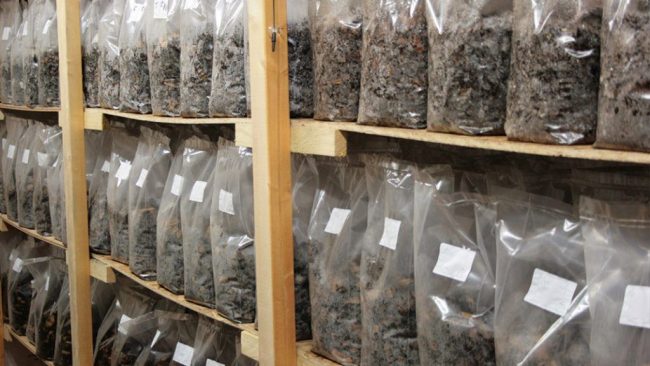





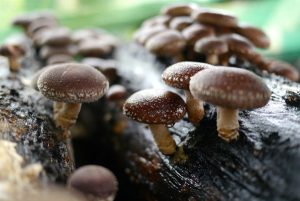
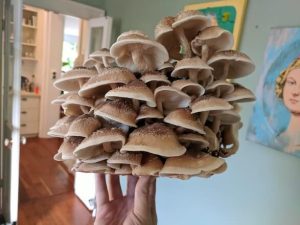

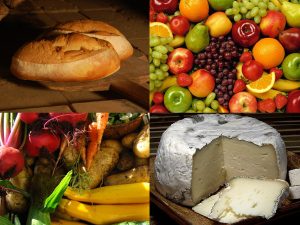
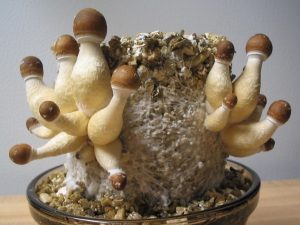
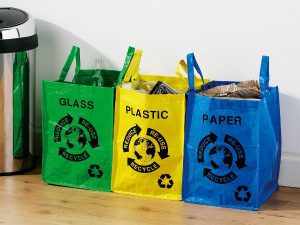
1 Comment
I’m fascinated and hopeful about fungi having seen the TED talk about oyster mushrooms converting oil spills to clean soil.